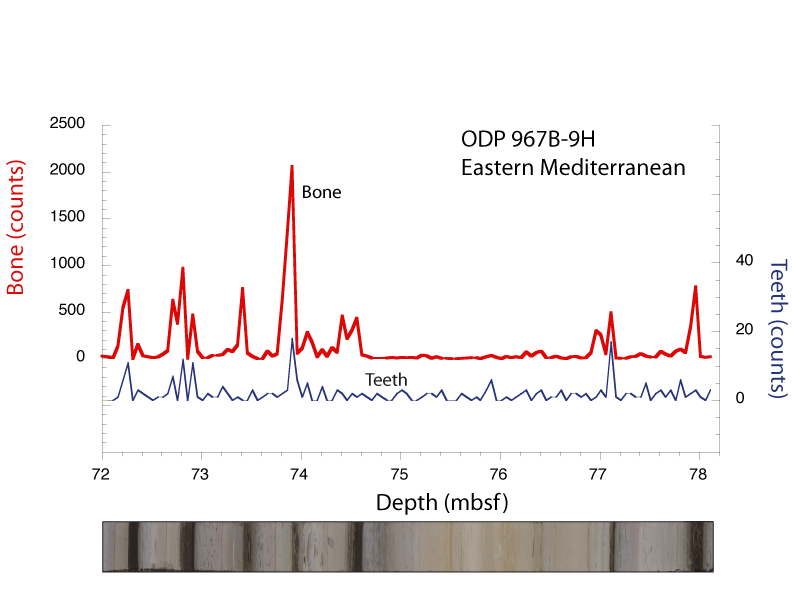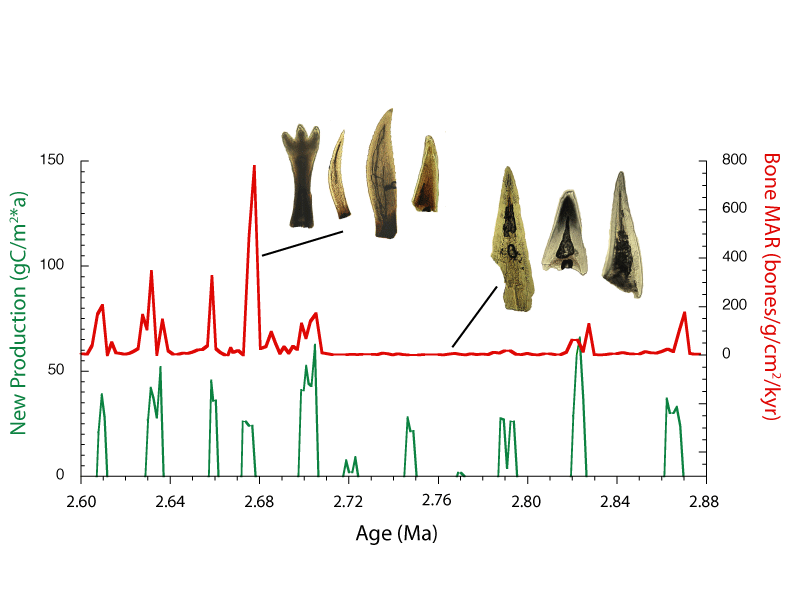One of the predictions for the future is that parts of the ocean are expected to develop extensive low oxygen (hypoxic) zones. One worry is that larger low oxygen areas may affect fish, lowering catches and depriving people of rich fisheries. I looked at this question by studying past hypoxic periods in the Mediterranean, when the basin repeatedly became a Black Sea-like basin where, today, the ocean deeper than ~30 m is almost completely anoxic.
I studied the abundance of fish teeth and bone in six hypoxic intervals (see above; shown by the dark bands in the core photo at the bottom of this figure. Note that fish bone and teeth actually become more abundant during most of the hypoxic intervals then they are in the intervening normal-oxic sediments (which are grey or tan). I also compared the fish record to an independent estimate of ocean productivity (called ‘new production’; lower figure) and calculate the abundance of bone as a ‘mass accumulation rate’ which corrects for any variations in sedimentation rates. The result is the same–it seems that fish do quite well under conditions of regional hypoxia. The fish community changes as shown by thier teeth, between hypoxic and normal times. The hypoxic times support mostly near surface fish–flying fish, tuna, mackerel–whereas the normal times have large stocks of Atlantic hake (a near bottom fish). To my surprise, fish become much more productive when the ocean is partly hypoxic–not the result I was expecting!


